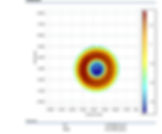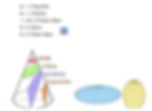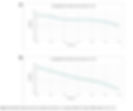Understanding Tecnis PureSee IOL
- Subhabrata Bhattacharya
- Mar 26
- 7 min read
Updated: Sep 10
Attention: The Tecnis PureSee IOL DFU clearly states the following: 'The posterior optic of the IOL has a proprietary refractive surface designed to extend range of vision'(TECNIS PureSee™ IOL, Model ZEN00V).
Per the company website the following is quoted under technical specification (last accessed 9th Sept, 2025) 'Shape: Biconvex, wavefront-designed anterior aspheric surface, proprietary refractive surface to increase the depth of focus'.
The following are the interpretation of Tecnis PureSee IOL optical principles.

This is a brief explanation of Tecnis PureSee IOL that has been launched in 2024. The official description of the lens from Johnson & Johnson (J&J) is that it is based on proprietary refractive technology that enables continuous changes in power(1). Beyond this the company claims a monofocal like dysphotopsia profile. For those who follow this blog and are interested in science, surely would seek more information to satiate their curiosity. Therefore, here I try to break in a simple language what this may mean to an user beyond the carefully scripted company message.

In the picture on the left are two circles, one big and the other small. The radius of curvature of the bigger circle will be higher than the smaller circle, naturally. However, the smaller radius of curvature (smaller circle) will be associated with a steeper curvature. In this case, the orange circle will have a steeper curvature and associated with a higher power. The opposite is true for the larger (blue) circle. If you design a convex lens with radius of curvature of the two circles, then the posterior curvature of the lens will be flatter than the anterior curvature.

Next let us see what happens if we play with the anterior and posterior radius of curvature of the lens/IOL. In image 2, the lens on the above has an equal radius of curvature on both sides of the lens. Note the depth of focus is limited for this equiconvex IOL. In the below, as we increase the posterior radius of curvature of the lens, the depth of focus increases. Thus a continuous change in refractive surface from the center of the lens to the periphery will introduce some depth of focus. In this case a positive spherical aberration is generated, that is the peripheral rays of light are falling before the focal point generated through refraction of the paraxial rays ( rays that go close to the optical axis of a lens).

Unlike positive spherical aberration, with negative spherical aberration, the marginal rays of light fall posterior or behind the paraxial rays of light (image 3). Thus a prolate surface ( steeper in the center and flatter in the periphery) will generate negative spherical aberration.
It is important to note that if the eye is emmetropic, that is the paraxial rays of light fall on the retina, negative spherical aberration may not help gain depth of focus, as the depth of focus generated will be in a hyperopic direction. Thus IOLs that provide depth of focus (EDOF) generally provide positive primary spherical aberration. If negative spherical aberration is generated it must either be associated with a secondary positive spherical aberration to bring the depth of focus on the myopic side, or the surgeons must target myopia in controlled amount.
Let us now put our focus on Tecnis PureSee IOL. The company talks about proprietary refractive changes, which could be interpreted as a controlled refractive power change by modifying the curvature of the lens posterior surface (the PureSee IOL has negative asphericity in the anterior surface to negate corneal positive spherical aberration). Thus, like image 2, a steeper curvature, of the posterior surface will induce depth of focus by creating a strum's conoid ( an area ) between the paraxial rays and the marginal rays that pass through these refractive curvature changes. Any change in curvature away from the monofocal base power of lens ( Tecnis monofocal for example ) will thus induce primary spherical aberration (defined here as the area between the focal point on the retina for an emmetropic eye and the rays of light falling anterior/posterior due to positive/negative spherical aberration). Thus Ruediger Schmid and Andreas F Borkenstein (2) in their paper has listed a primary spherical aberration value of negative .65 micron and a secondary spherical aberration value of .2 with the Tecnis PureSee IOL.
--------------------------------------

For the enthusiasts in optics, lower order and higher order aberrations are often classified according to Zernike Polynomials (see video on Zernike polynomials https://www.quickguide.org/post/interpreting-zernike-polynomials-in-ophthalmology ).
Defocus, that is myopia or hyperopia error is a lower order aberration that can be corrected with glasses. Primary spherical aberration (denoted by Z4-0 and in image 7 as A4-0) is a form of higher order aberration that cannot be corrected with glasses.
However, in Zernike Polynomials, classification of primary spherical aberration ( denoted by fourth order of radius, r, from vertex of lens) is related to lower order defocus, that is myopia or hyperopia (second power of radius, r, from vertex of lens). This is because the mathematical calculation involved to compute spherical aberration has also a lower order term involved in it. Thus the lower order defocus cannot be absolutely separated from the higher order spherical aberration.

To explain this more, image 8 explains that lower order defocus is a function of second order of radius, r from the center, while the primary spherical aberration is denoted by the fourth function of radius r. The total spherical aberration is calculated by the equation which has both these terms of r. Thus any defocus induced by a lens either on the myopic or hyperopic direction will induce a spherical aberration of the opposite sign. That is, if the lens curvature is modified in a way to provide a positive power in the center ( myopic focus) to enhance the depth of focus, it will induce a primary negative spherical aberration (opposite to the defocus being induced). That is why you see in the table in Image 7 a significant negative primary spherical aberration found by Schmid and Borkenstein.

-------------------------------
What is secondary spherical aberration?

In image 7, you can see some degree of secondary spherical aberration too. Secondary spherical aberration is an higher order spherical aberration that occurs due to local changes in the curvature of a lens. While primary spherical aberration (positive or negative) is the result of the overall slope or shape of the lens from the center to the periphery, secondary spherical aberration occurs due to slight deviations of the rays due to local change in curvatures (image 4).

Now let us focus on the primary spherical aberration. In an earlier article Spheric, Aspheric and Freeform lenses (https://www.quickguide.org/post/spherical-aspheric-and-freeform-lenses) I have described the conic constant (k constant of a lens).
The conic constant defines the shape of the lens as you move from the center to the periphery of the lens(image 5). Thus a k constant of 0 indicates that the lens is a spherical lens. The conic constant of a parabola ( a lens which brings all rays of light to focus at one point ) is -1 and spherical aberration generated by such a lens will be nil.
It is important to state here that, curvature changes that generate depth of focus are on the IOL plane, while spherical aberration that defines how much of depth of focus is added (in microns) is on the image plane or retinal plane. For example, if we have to talk in terms of the cornea, the corneal asphericity defines the shape or slope of the cornea and the shape of the cornea determines what amount of spherical aberration will be generated by such shape on the retina or image plane.
Corneal asphericity is defined by the Q factor or shape factor of the cornea. Similarly, the k constant or conic constant defines the shape of the lens or IOL in this case. Depending on this shape factor of the IOL, the spherical aberration is generated providing depth of focus, but at the expense of image quality. IOL companies do not state the k constant of such IOLs that generate depth of focus through curvature changes, but instead leave it to interpretation by stating proprietary nature of design.

According to bench analysis by Schimd and Borkenstein (2) the PureSee IOL may provide a depth of focus of 1.75 diopters at the spectacle plane ( 2.2 diopter at the IOL plane). Simulated visual acuity showed that the lens maintained a visual acuity of .1 logmar (20/25) at -1.5 diopter (66 cms) of defocus at a 3.0 mm aperture. However, at larger aperture diameter of 4.5 mm, this may drop to .2 logmar (20/32) at the same defocus (distance). See image 6.
Impression of PureSee IOL:
Depth of focus is increased through continuous refractive power change in the posterior surface.
Any change in power induces spherical aberration and PureSee IOL demonstrates a combination of primary and secondary spherical aberration of opposite sign.
At an average photopic pupil aperture, the depth of focus at 65 cms is excellent and may help patients to do intermediate tasks very comfortably.
At higher pupillary aperture, there is a drop in depth of focus, which should be beneficial for the patient as patient's primary need is the distance
.

Spherical aberration values as a function of pupil size quickguide.org 
Measured spherical aberration values of different EDOF IOLS quickguide.org
References:
TECNIS PureSee IOL with TECNIS SIMPLICITY • DOF2023CT4008 – TECNIS PureSee Delivery System, Delivery System, Model DEN00V – DFU INT – Z311782, current revision
Ruediger Schmid , Andreas F Borkenstein Optical Bench Evaluation of the Latest Refractive Enhanced Depth of Focus Intraocular Lens Clinical Ophthalmology 2024:18 1921–1932
https://openaccess.city.ac.uk/id/eprint/23663/ Aspheric Intraocular Lens in Cataract Surgery Mayank Ambarish Nanavaty,



